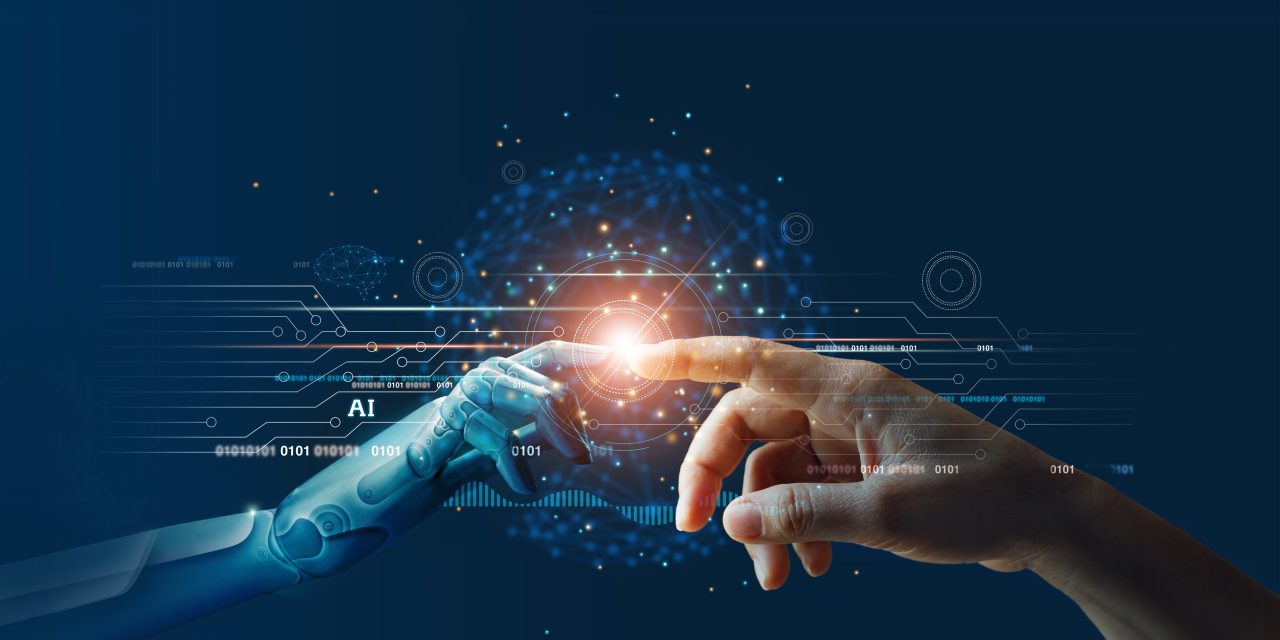Artificial Intelligence (AI) is a term that has been around for decades, but it has gained a lot of attention in recent years. AI is a branch of computer science that deals with the development of intelligent machines that can perform tasks that typically require human intelligence. AI has been used in various applications, from self-driving cars to virtual assistants, and it has the potential to revolutionize the way we live and work.
The definition of AI is constantly evolving, but it generally refers to the ability of machines to perform tasks that would normally require human intelligence. This includes tasks such as learning, problem-solving, reasoning, and decision making. AI is often divided into two categories: narrow or weak AI, which is designed to perform a single task, and general or strong AI, which is designed to perform any intellectual task that a human can do.
As AI technology continues to advance, there are many questions about its future impact on society. Some people are concerned about the ethical implications of AI, while others are excited about the potential benefits it could bring. In this article, we will explore the definition of AI, its historical overview, types of AI, applications of AI, ethics, and the future of AI.
Key Takeaways
- AI refers to the ability of machines to perform tasks that would normally require human intelligence.
- AI is divided into narrow or weak AI and general or strong AI.
- AI has the potential to revolutionize the way we live and work, but there are also concerns about its ethical implications.
Definition of Artificial Intelligence
Artificial intelligence (AI) is the ability of machines to perform tasks that would normally require human intelligence. It is a branch of computer science that deals with the development of algorithms and computer programs that can simulate human intelligence. The aim of AI is to create machines that can think, learn, and adapt like humans.
AI is a broad field that encompasses various sub-fields, including machine learning, natural language processing, computer vision, and robotics. Machine learning is a subset of AI that involves the use of algorithms and statistical models to enable machines to learn from data without being explicitly programmed. Natural language processing is another subset of AI that deals with the interaction between computers and human language. Computer vision is the ability of machines to interpret and understand visual information from the world around them.
AI has the potential to revolutionize the way we live and work. It has already been applied in various industries, including healthcare, finance, and transportation. In healthcare, AI is being used to develop personalized treatment plans and improve disease diagnosis. In finance, AI is being used to detect fraud and manage risk. In transportation, AI is being used to develop self-driving cars and optimize traffic flow.
However, AI is not without its challenges. One of the biggest challenges is ensuring that machines are programmed to act ethically and responsibly. There is also the risk of job displacement as machines become more capable of performing tasks that were previously done by humans.
Overall, AI is a rapidly growing field that has the potential to transform the way we live and work. It is important to approach this technology with caution and ensure that it is developed and used in a responsible and ethical manner.
Historical Overview
Artificial Intelligence (AI) is a field of computer science that focuses on creating intelligent machines that can work and learn like humans. The idea of AI has been around for centuries, with ancient Greek myths featuring robots and other intelligent machines. However, it wasn’t until the 1950s that modern AI research began.
In 1956, a group of researchers organized the Dartmouth Conference, which is widely considered to be the birthplace of AI. The conference brought together researchers from different fields to discuss the possibility of creating machines that could think and learn like humans.
During the early years of AI research, there was a lot of optimism about the potential of the field. Researchers believed that it would be possible to create machines that could understand natural language, solve complex problems, and even reason about abstract concepts.
However, progress in the field was slow, and by the 1970s, many researchers had become disillusioned with the idea of creating intelligent machines. The field entered a period known as the “AI winter,” during which funding for AI research dried up, and many researchers left the field.
In the 1980s, progress in AI research began to pick up again. New techniques such as expert systems and neural networks were developed, and researchers began to make progress in areas such as natural language processing and computer vision.
Today, AI is a rapidly growing field, with applications in areas such as healthcare, finance, and transportation. While there is still much to be learned about how to create truly intelligent machines, the progress made in the field over the past few decades has been impressive.
Types of Artificial Intelligence
Artificial intelligence (AI) is an umbrella term that encompasses various types of intelligent machines. AI can be broadly classified into three types: Narrow AI, General AI, and Superintelligent AI.
Narrow AI
Narrow AI, also known as weak AI, is designed to perform a specific task or set of tasks. This type of AI can excel in a particular domain, such as playing chess, recognizing faces, or processing natural language. Narrow AI systems are trained on a large dataset and use machine learning algorithms to improve their performance over time. Examples of narrow AI include Siri, Alexa, and chatbots.
General AI
General AI, also known as strong AI, is designed to perform any intellectual task that a human can. This type of AI can reason, learn, and understand complex concepts. General AI systems are not limited to a specific domain and can apply their knowledge to a wide range of tasks. However, creating a General AI system is still a distant dream, and researchers are working towards achieving this goal.
Superintelligent AI
Superintelligent AI is an AI system that surpasses human intelligence in all domains. This type of AI can perform any intellectual task with ease and can even improve itself. Superintelligent AI is still a hypothetical concept, and its development raises concerns about the safety and control of such a system.
In conclusion, AI can be classified into three types: Narrow AI, General AI, and Superintelligent AI. While Narrow AI systems are prevalent today, General AI and Superintelligent AI are still in the research and development stage. Each type of AI has its own strengths and limitations, and researchers are working towards creating more advanced AI systems that can benefit society.
Applications of Artificial Intelligence
Artificial intelligence has been used in various fields to automate processes, improve efficiency, and make predictions. Here are some of the notable applications of AI:
Healthcare
In healthcare, AI is used to analyze medical data, assist in diagnosis, and develop treatment plans. AI-powered systems can analyze medical images, such as X-rays and MRIs, to identify anomalies and help doctors make accurate diagnoses. AI can also be used to monitor patients’ vital signs and alert healthcare providers of any abnormalities. Additionally, AI can help researchers analyze large amounts of medical data to identify patterns and develop new treatments.
Transportation
AI is also being used to improve transportation systems, particularly in the development of autonomous vehicles. AI-powered systems can analyze traffic patterns, predict accidents, and optimize routes to reduce congestion. Self-driving cars are also being developed, which use AI to navigate roads and make decisions based on real-time data.
Education
In education, AI is being used to personalize learning and improve student outcomes. AI-powered systems can analyze student data, such as test scores and learning styles, to create personalized learning plans. AI can also be used to grade assignments and provide feedback to students, freeing up teachers’ time for other tasks.
Finance
In finance, AI is used to analyze financial data and make predictions about market trends. AI-powered systems can analyze large amounts of financial data to identify patterns and make predictions about future market trends. AI can also be used to detect fraud and automate financial processes, such as loan approvals and insurance claims.
Overall, the applications of AI are vast and continue to grow as the technology advances. As AI becomes more integrated into various industries, it has the potential to revolutionize the way we live and work.
Ethics and Artificial Intelligence
Artificial Intelligence (AI) is a rapidly growing field with the potential to revolutionize many aspects of our lives. However, as AI systems become more advanced and ubiquitous, they raise important ethical concerns that must be addressed. In this section, we will explore some of the key ethical considerations surrounding AI.
Privacy Concerns
One of the most pressing ethical concerns surrounding AI is the issue of privacy. AI systems are capable of collecting and analyzing vast amounts of data about individuals, including their personal information, online activity, and even their physical movements. This data can be used to make predictions about individuals’ behavior, preferences, and even their health status.
To address these concerns, it is important to ensure that AI systems are designed with privacy in mind. This includes implementing strong data security measures, such as encryption and access controls, and obtaining informed consent from individuals before collecting and using their data.
Job Displacement
Another major ethical concern surrounding AI is the potential for job displacement. As AI systems become more advanced, they are capable of automating many tasks that were previously performed by humans. This could lead to significant job losses, particularly in industries such as manufacturing and transportation.
To mitigate the impact of job displacement, it is important to invest in education and training programs that prepare workers for the jobs of the future. Additionally, policymakers may need to consider implementing social safety nets, such as universal basic income, to support individuals who are unable to find employment due to AI-driven automation.
Bias in AI
Finally, a critical ethical concern surrounding AI is the issue of bias. AI systems are only as unbiased as the data they are trained on, and if the data is biased, the resulting AI system will be biased as well. This can lead to discrimination against certain groups, such as women and minorities, and perpetuate existing inequalities in society.
To address this issue, it is important to ensure that AI systems are designed and trained with diversity and inclusivity in mind. This includes using diverse datasets and involving individuals from a variety of backgrounds in the design and development process. Additionally, it is important to regularly monitor and audit AI systems for bias and take corrective action when necessary.
Overall, the ethical considerations surrounding AI are complex and multifaceted. It is important to approach these issues with a thoughtful and nuanced perspective, and to prioritize the well-being of individuals and society as a whole.
Future of Artificial Intelligence
Artificial Intelligence (AI) is advancing rapidly and has the potential to transform the world as we know it. Here are a few potential developments that we might see in the future of AI:
Autonomous Systems
One of the most promising areas of AI is autonomous systems, which are capable of making decisions and taking actions without human intervention. Autonomous systems are already being used in industries such as transportation and manufacturing, and they have the potential to revolutionize many other fields, such as healthcare and finance.
Personalized Experiences
AI has the potential to create more personalized experiences for individuals. For example, AI-powered chatbots can provide personalized customer service, while AI-powered recommendation engines can suggest products or services based on a user’s preferences and past behavior.
Improved Healthcare
AI has the potential to improve healthcare in a number of ways. For example, AI-powered diagnostic tools can help doctors make more accurate diagnoses, while AI-powered robots can assist with surgeries and other medical procedures.
Ethical Concerns
As AI becomes more advanced, it raises a number of ethical concerns. For example, there is the potential for AI to be used in ways that are harmful to society, such as in autonomous weapons or in the creation of deepfakes. It is important that we address these concerns and ensure that AI is used in a responsible and ethical manner.
Overall, the future of AI is exciting and full of potential. As AI continues to advance, we can expect to see many new developments and innovations that will transform the world around us.
Frequently Asked Questions
What is artificial intelligence in simple words?
Artificial Intelligence (AI) is the ability of a computer or machine to perform tasks that typically require human intelligence. It involves creating intelligent machines that can think, reason, and learn like humans. AI can be classified into two categories: narrow or weak AI, which is designed to perform a specific task, and general or strong AI, which can perform any intellectual task that a human can.
What is artificial intelligence with examples?
AI has numerous applications and can be found in various fields, including healthcare, finance, transportation, and entertainment. Some examples of AI include virtual assistants like Siri and Alexa, self-driving cars, facial recognition technology, and spam filters.
How does AI work?
AI works by using algorithms and statistical models to analyze data and identify patterns. The machine then uses this information to make decisions or predictions. AI systems can be trained using supervised or unsupervised learning, reinforcement learning, or deep learning.
What are the advantages of artificial intelligence?
AI has numerous advantages, including increased efficiency, accuracy, and speed. It can help automate repetitive tasks, reduce errors, and improve decision-making. AI can also help businesses gain insights into customer behavior, improve customer service, and reduce costs.
Are artificial intelligence and machine learning the same?
Artificial intelligence and machine learning are often used interchangeably, but they are not the same thing. AI is a broader concept that encompasses machine learning, which is a subset of AI. Machine learning involves training machines to learn from data and make predictions or decisions based on that data.
What are the different types of AI?
There are four types of AI: reactive machines, limited memory, theory of mind, and self-aware AI. Reactive machines are the most basic form of AI and can only react to specific situations based on pre-programmed rules. Limited memory machines can learn from past experiences and make decisions based on that data. Theory of mind machines can understand human emotions, beliefs, and intentions. Self-aware machines are the most advanced form of AI and can think, reason, and learn like humans.



